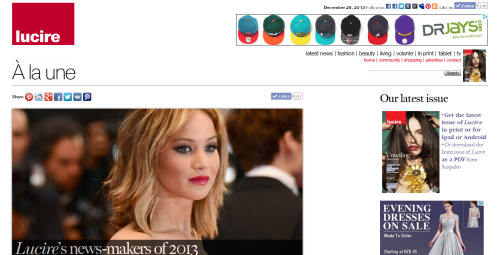The ‘Insider’ section has now been facelifted for the first time, bringing it in line with the new pages on the Lucire website. It has also dawned on us that this blog celebrates its second anniversary.
Lucire was a late convert to blogging, even though I had been blogging away—on a very irregular basis—since 2003. There was a belief inside Lucire that blogs were for writers who didn’t have access to a web design crew, and for some time they were the poor cousins of the well designed website.
By 2007 that was very untrue. Many blogs had started and were credible, with plenty of traffic to boot; and others were even running entire magazines using blogging software.
At Lucire, at least, ‘Insider’—taking a name from the print editions—seemed to be a very good way to record some of our op–eds, which were traditionally deleted from the editorial page when a new one came along. Back then, the idea was to emulate print magazines by having a single, overarching editorial for the entire site. Obviously, those requirements changed after Lucire launched its own print editions.
The first posts tried to give readers an insight on the items that came in here every day, as well as underline our editorial decisions. On September 11, 2007, we re-ran our 2001 editorial to commemorate the terror attacks in New York. Since then, ‘Insider’ has become a depository of almost anything that does not fit into the main part of the site; and as the RSS feed is based around it, to many people it is the main part of the site. Lucire’s mobile edition, Twitter account and Facebook fan page take content from here.
The flexible nature of sections such as ‘Insider’ is so typical of the web, which continues to evolve after all these years. I dare not make any prediction on what ‘Insider’ will focus on in 2011, but I believe it will be on more media, including some very high-resolution, hand-held devices, for people who want their news on the go. I also believe it will drive the content in our print magazines, with a model that is yet to emerge. It is more interactive, and it engages people more instantly. The headlines pose the issues, which might get to readers via Twitter or elsewhere—and they come here to give more detailed feedback. The print magazines reflect readers’ inputs and their opinions, and act as collectible records.
Watch this space: the 2010s will be a very interesting time for publishing.
Revising the ‘Insider’ section
Flying about
Tomorrow, blogs might even drive print magazines
Categories
branding / culture / design / history / journalism / Lucire / media / publishing / technology / trend / Web 2·0
Filed by Jack Yan
branding / culture / design / history / journalism / Lucire / media / publishing / technology / trend / Web 2·0
Filed by Jack Yan








